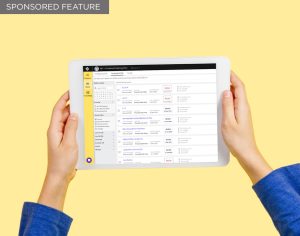If VAT is something that’s starting to affect your business, read on for an introduction to four different types of VAT schemes, how to register your business and how you can start seeing the paperwork as an opportunity rather than a threat.
Let’s start with the different type of schemes SMEs can chose between. The first type of VAT scheme is called Standard VAT Accounting. As the name suggest, this is the standard method of reporting your VAT. Simply put, the one thing to keep in mind is that if the turnover of your business exceeds £85,000, you have to register for VAT.
But there are also some voluntary schemes that might suit your business and the way it works better. Like everything, there are pros and cons with all of them. Before you sign up to any of them, make sure to speak with your accountant who will be able to advise you on your options.
The second method of paying your VAT is through the VAT Flat Rate Scheme. This is a voluntary scheme for businesses with a turnover of less than £150,000 – you don’t even have reach the £85,000 VAT threshold to sign up for this one. If you sign up to this scheme you pay a percentage of your turnover to HMRC. But remember that the percentage differs according to the industry sector you’re in. A downside to this alternative is that it prevents you from being able to claim VAT back on purchases you make.
The third method of paying your VAT is another voluntary scheme called the Cash Accounting Scheme. This is for businesses with a turnover of less than £1.35m. You only pay HMRC the VAT income you’ve actually received during a quarter and you only reclaim VAT on your purchases when you have paid your supplier.
The final scheme is the Annual Accounting Scheme. Just like the two preceding ones, this is a voluntary scheme. And just like the Cash Accounting Scheme, this method is for businesses with a turnover below £1.35m. However, instead of making quarterly returns, you make advance payments towards your bill throughout the year. You then file one VAT return and pay the balance or claim a refund for any overpayments.
But no matter which of these schemes you and your accountant decide is best for you, you’re still left with the question of how to register to pay VAT. Fortunately, this is a reasonably simple process that can usually be done online. Although you need five pieces of information to hand when you do: your unique tax reference, your company’s bank account details, your company number and registered address, details of any associated businesses from the past two years and you might also need the details of any businesses being transferred or bought.
There is no doubt that there is a lot of administration involved when you are registered for VAT. However, with the right systems in place the effects of VAT registration can be lessened. Indeed, you could even find yourself with less work than before. Tools like Concur Invoice put an end to supplier invoice data entry and they can be tailored to meet small business needs. They also give you powerful reporting capabilities that make VAT returns easy and give you better visibility into your numbers than ever before.
Additionally, it may be worth bearing in mind that the government plans to make it easier to get your taxes right through the Making Tax Digital initiative that comes into effect in April 2019. At that point, businesses will be required to submit VAT returns electronically and have digital records of all expenses. The intention is that Making Tax Digital will provide a single, seamless process with quarterly updates generated and sent direct from the software you use to keep your records.
So rather than seeing VAT registration as a threat, you could view it as an opportunity to make your business better prepared and more productive than ever before. For more VAT and HMRC compliance tips with download this complimentary ebook.![]()
This article comes courtesy of Anita Marsh, the VP SMN marketing of international markets at SAP Concur, the financial management company
Share via:








































